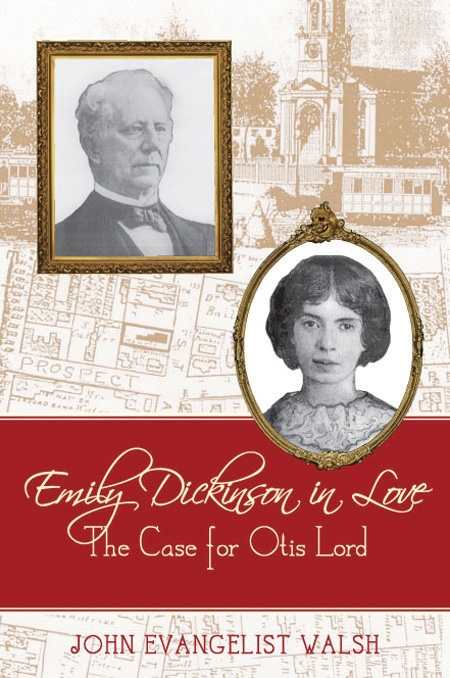Emily Dickinson in Love
The Case for Otis Lord
The mention of Emily Dickinson’s name does not generally conjure up images of a hot-blooded hussy sneaking off for steamy encounters with a married man who was old enough to be her father. But that’s essentially the picture the author presents in this intriguing piece of literary detective work. Otis Lord, the supposed object of Dickinson’s affections from her late twenties until her death at fifty-five, was a distinguished judge and long-time friend of the Dickinson family. It is even recorded, Walsh notes, that he first met Emily at her home—and bounced her on his knee—when she was still a toddler. But did she return much later to that knee with carnal intent?
Walsh makes his case in flashbacks rather than chronologically. Consequently his narrative is hard to follow for those not already grounded in Dickinson facts and lore. First, then, some crucial dates: Lord was born in 1812 and died in 1884, two years before Dickinson. His wife, Elizabeth, died in 1877, leaving Lord eligible to marry for the last seven years of his life.
Walsh speculates—backed by some persuasive data—that Dickinson fell in love with Lord in 1857 and conducted a clandestine affair with him in Boston during the fifteen months she spent there in 1864 and 1865, ostensibly undergoing medical treatment for her eyes. While in Boston, she stayed at a boarding house owned by her cousins. Simultaneously, Lord was holding court in Boston rather than in Northampton, where he usually presided. Proximity alone, however, proves nothing. It merely suggests tantalizing possibilities. “[F]or her remaining twenty years,” Walsh observes, “nothing is heard of the eye trouble, nor is it known that she ever wore glasses.”
Letters from Dickinson to Lord that might have confirmed a physical relationship between the two were destroyed or mutilated by Dickinson’s brother and sister after her death. Walsh provides some close readings of surviving letters and poems that point in that direction, particularly the three so-called “Master” letters that may have been written and sent to Lord while his wife was still alive. Walsh flatly declares that they were sent. The affection between the poet and the judge blossomed openly in the final years of their lives, and the two would have married, Walsh contends, had not the declining health of both made that event impossible. Even if Walsh’s chain of evidence is in some places fashioned from gossamer links, the love story he tells is compelling—and overwhelmingly sad.
Reviewed by
Edward Morris
Disclosure: This article is not an endorsement, but a review. The publisher of this book provided free copies of the book to have their book reviewed by a professional reviewer. No fee was paid by the publisher for this review. Foreword Reviews only recommends books that we love. Foreword Magazine, Inc. is disclosing this in accordance with the Federal Trade Commission’s 16 CFR, Part 255.

